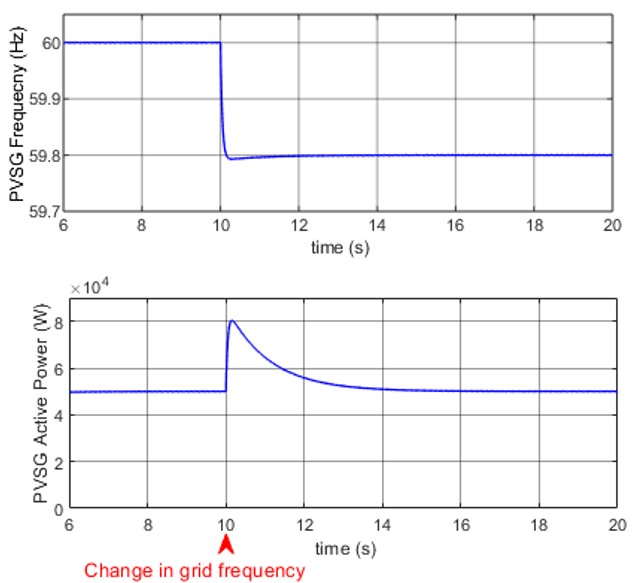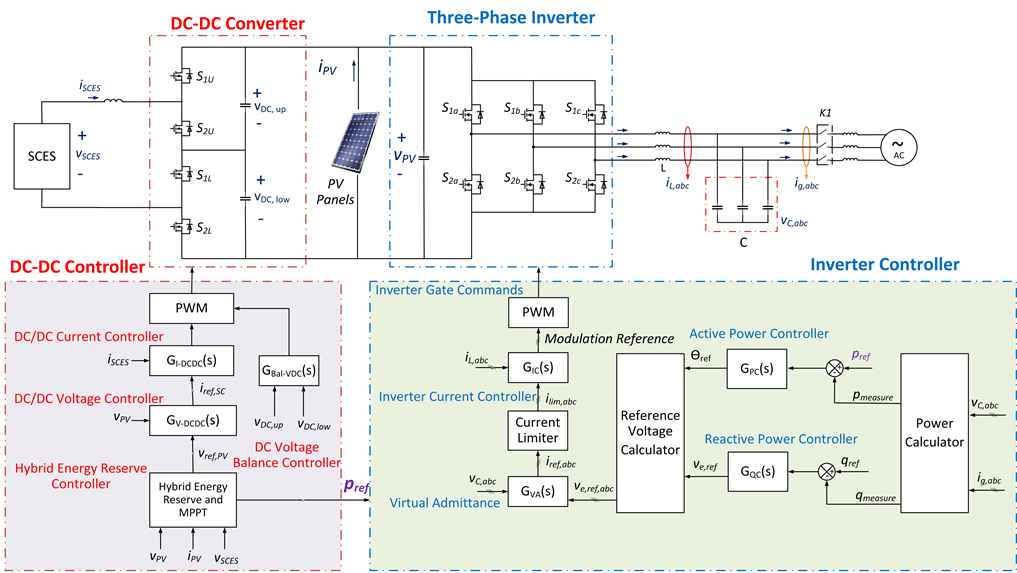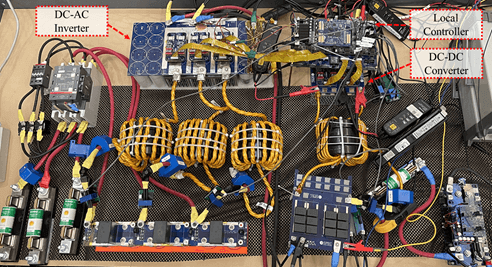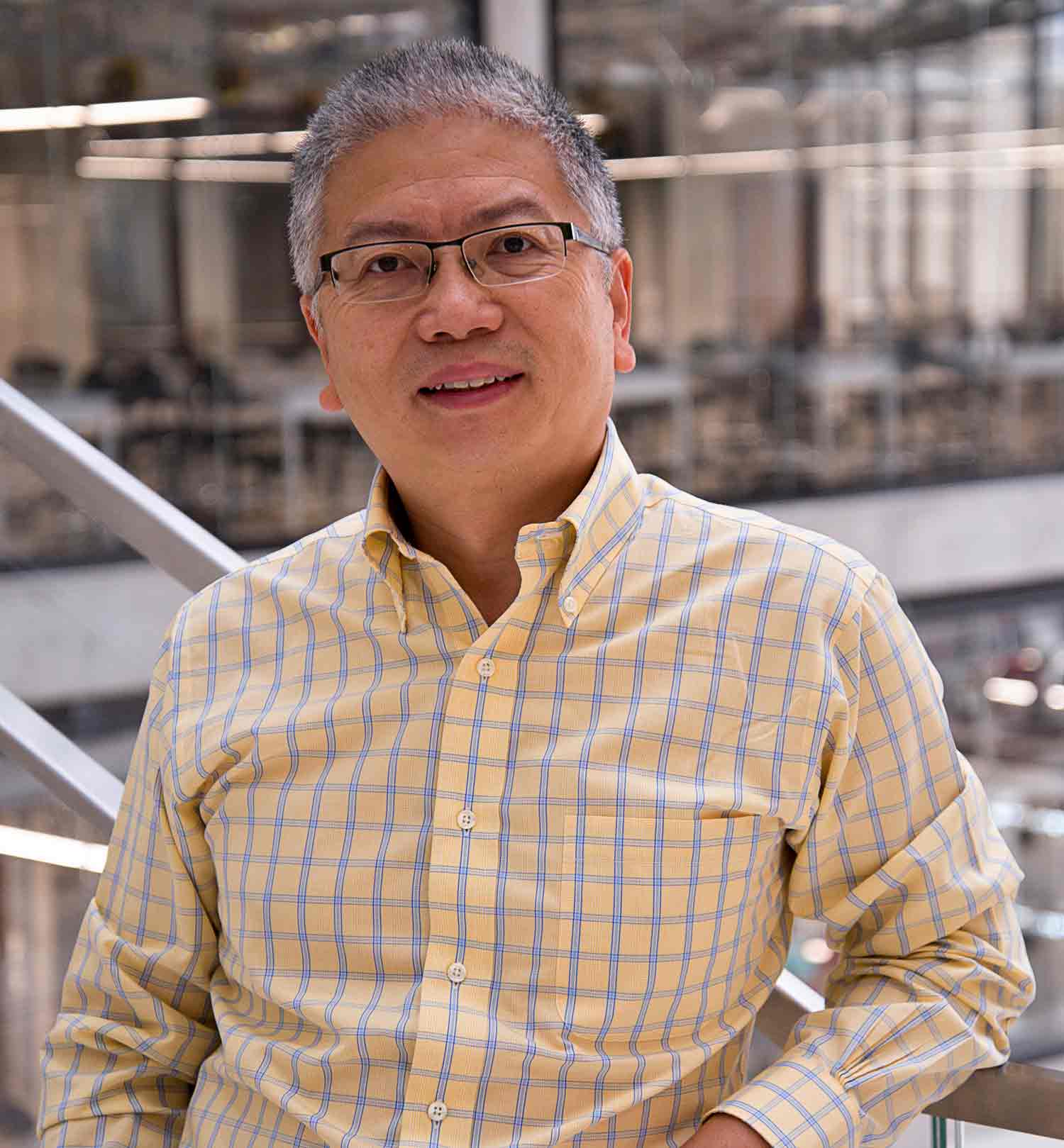Grid Forming Photovoltaic Synchronous Generator (PVSG) Power Plants
Written by Zibo Chen, Houshang Salimian Rizi, and Alex Q. Huang
Today's power grids are designed based on synchronous generator (SG)-based power plants such as coal, naturel gas, hydro, and nuclear. These power plants operate as grid forming (GFM) voltage sources that set the voltage and frequency of the grid. In an SG, the kinetic energy stored in the rotor serves as inertia against frequency deviation and provides time to balance the power demand and power generation. Additionally, GFM power plants can black start the grid, which is important to recover the grid from a blackout. As inverter-based resources (IBR) such as solar and wind replace SG power plants, the safe operation of the grid is becoming a challenge. This is because today’s IBRs are all designed as grid following (GFL) units. They follow the SG power plants and do not provide inertia and frequency support. For example, in some worst-case scenarios, the system inertia has dropped to 130% of the critical inertia in the ERCOT grid [1].
The Semiconductor Power Electronic Center (SPEC) at the University of Texas at Austin has developed a novel GFM Photovoltaic Synchronous Generator (PVSG) architecture for next generation PV power plants. The new and novel control system in the PVSG enables it to operate like a GFM voltage source, which provides critically needed grid supporting functions, such as black start, PV power intermittence filter, inertia and grid frequency response, voltage regulation, and islanding mode operation.
GFM PVSG Power Plants
A PVSG power plant requires the integration of an energy storage system with the PV. The energy storage can be connected to the PV inverter on the AC or DC side respectively as shown in Fig.1. For the AC-coupled PVSG system [2], the energy storage device is connected to the AC side by a DC-DC converter and a DC-AC inverter. In this case, a GFL PV inverter system is converted to a GFM system without any modification on the PV inverter side. This is a good approach for transforming the existing PV power plants to GFM ones. For next-generation GFM PV power plants, a DC-Coupled PVSG as shown in Fig.1b is preferred. The energy storage device is coupled to the PV on the DC side through a DC-DC converter. In this architecture, the system size and cost are minimized while the efficiency and power density are increased.
Supercapacitor energy storage (SCES) can be used in the PVSG to provide black start, PV power intermittence filtering and frequency inertia support. Battery energy storage (BES) can be used to enable primary and secondary frequency responses. Fig. 2 shows a simulated PVSG response to grid frequency change, mimicking a SG. In this simulation the PV is operating at maximum power point (MPP) with 50kW PV power and after a frequency drop from 60 to 59.8 Hz at t = 10s, the SCES provides inertia for 5s with maximum PVSG power of 80kW. After t = 15s PVSG generates 50kW which is MPP of the PV.

Fig. 1 Photovoltaic Synchronous Generator (PVSG) system. (a) AC coupled PVSG; (b) DC coupled PVSG.

Fig.2 Frequency inertia support by PVSG after a step change in grid frequency
150 kW all-SiC PVSG
The DC coupled PVSG system performance can be further improved by utilizing wide bandgap (WBG) power semiconductor device technologies such as the SiC MOSFETs due to substantially reduced switching energy losses when compared with Si IGBT technology. The system diagram is shown in Fig.3 as an example. Fig. 4 shows the all-SiC 150kW PVSG hardware developed by SPEC targeting 1500V PV applications with 600V grid connection. It includes a 1500V SiC three phase inverter, a bidirectional DC-DC converter, and a 2.4F SCES unit. 1700V and 900V SiC power MOSFET modules are utilized in the design. The estimated peak efficiency is 99.3% for the inverter and 99.5% for the DC-DC converter. The low cost 2.4F SCES is sufficient to provide 5 second of inertia support at 1pu. Additionally, the designed PVSG can ride through faults by limiting the fault current to 2pu.

Fig. 3 Proposed all-SiC PVSG with DC coupled PV and SCES system

Fig.4 150 kW all-SiC PVSG hardware
Conclusions
Modern power systems with a higher level of PV penetration will have substantial operational challenges, including but not limited to the lack of inertia and frequency support. Therefore, a GFM PV plant is needed in the future. The proposed GFM PVSG concept can provide a cost-effective approach forward. The power electronics converters can benefit from the SiC technology with higher efficiency and higher power density. The required energy storage is very low and can be effectively provided by a SCES. The SCES can be replaced by a BES to provide inertia support, primary and secondary frequency responses.
References
- Electric Reliability Council of Texas, Inc. “Inertia: Basic Concepts and Impacts on the ERCOT Grid,” Austin, TX, USA, 2018. Accessed on: May 30, 2021. [Online]. Available: http://www.ercot.com/content/wcm/key_documents_lists/141324/Inertia_Basic_Concepts_Impacts_On_ERCOT_v0.pdf
- X. Quan et al., "Photovoltaic Synchronous Generator: Architecture and Control Strategy for a Grid-Forming PV Energy System," in IEEE Journal of Emerging and Selected Topics in Power Electronics, vol. 8, no. 2, pp. 936-948, June 2020
This article edited by Gabriel Ordoñez
For a downloadable copy of the June 2021 eNewsletter which includes this article, please visit the IEEE Smart Grid Resource Center.



Since 1983, he has been involved in the development of Si and WBG power semiconductor devices and power integrated circuits. He fabricated the first IGBT power device in China in 1985. He is the inventor and key developer of Si and SiC emitter turn-off (ETO) thyristor. He developed the concept of Energy Internet and the smart transformer based Energy Router technology. He has mentored and graduated more than 90 Ph.D. and master students, and has published more than 550 papers in international conferences and journals. He has also been granted more than twenty U.S. patents. He is the recipient of the NSF CAREER award, the prestigious R & D 100 Award, the MIT Technology Review’s 2011 Technology of the Year Award, the 2019 IEEE IAS Gerald Kliman Innovator Award and the 2020 IEEE PELS David Middlebrook Achievement Award. Dr. Huang is a fellow of National Academy of Inventors (NAI) and IEEE.
To have the Bulletin delivered monthly to your inbox, join the IEEE Smart Grid Community.
Past Issues
To view archived articles, and issues, which deliver rich insight into the forces shaping the future of the smart grid. Older Bulletins (formerly eNewsletter) can be found here. To download full issues, visit the publications section of the IEEE Smart Grid Resource Center.




